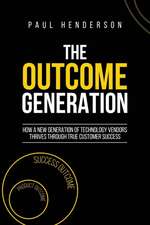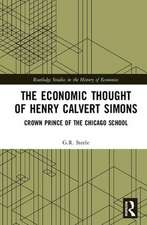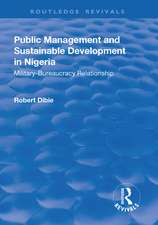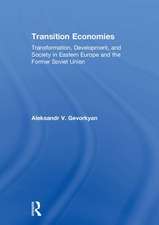Economic Integration in Asia: Key Prospects and Challenges with the Regional Comprehensive Economic Partnership: Routledge Studies in the Modern World Economy
Editat de Deeparghya Mukherjeeen Limba Engleză Hardback – 17 ian 2019
Din seria Routledge Studies in the Modern World Economy
-
 Preț: 385.79 lei
Preț: 385.79 lei -
 Preț: 309.27 lei
Preț: 309.27 lei -
 Preț: 385.62 lei
Preț: 385.62 lei -
 Preț: 715.92 lei
Preț: 715.92 lei -
 Preț: 310.33 lei
Preț: 310.33 lei -
 Preț: 384.86 lei
Preț: 384.86 lei -
 Preț: 310.84 lei
Preț: 310.84 lei -
 Preț: 311.07 lei
Preț: 311.07 lei -
 Preț: 298.64 lei
Preț: 298.64 lei - 18%
 Preț: 1104.14 lei
Preț: 1104.14 lei - 26%
 Preț: 992.21 lei
Preț: 992.21 lei - 15%
 Preț: 709.03 lei
Preț: 709.03 lei - 18%
 Preț: 1046.50 lei
Preț: 1046.50 lei - 26%
 Preț: 821.46 lei
Preț: 821.46 lei - 18%
 Preț: 1054.10 lei
Preț: 1054.10 lei - 15%
 Preț: 693.86 lei
Preț: 693.86 lei - 18%
 Preț: 1221.43 lei
Preț: 1221.43 lei - 18%
 Preț: 939.08 lei
Preț: 939.08 lei -
 Preț: 395.26 lei
Preț: 395.26 lei - 18%
 Preț: 1161.85 lei
Preț: 1161.85 lei - 26%
 Preț: 1014.31 lei
Preț: 1014.31 lei - 25%
 Preț: 823.99 lei
Preț: 823.99 lei - 26%
 Preț: 822.54 lei
Preț: 822.54 lei - 18%
 Preț: 1158.06 lei
Preț: 1158.06 lei - 26%
 Preț: 849.65 lei
Preț: 849.65 lei - 18%
 Preț: 1269.27 lei
Preț: 1269.27 lei - 18%
 Preț: 1052.03 lei
Preț: 1052.03 lei - 15%
 Preț: 696.86 lei
Preț: 696.86 lei - 25%
 Preț: 1022.76 lei
Preț: 1022.76 lei - 24%
 Preț: 564.95 lei
Preț: 564.95 lei - 18%
 Preț: 715.18 lei
Preț: 715.18 lei - 15%
 Preț: 638.98 lei
Preț: 638.98 lei - 18%
 Preț: 705.85 lei
Preț: 705.85 lei - 18%
 Preț: 908.17 lei
Preț: 908.17 lei - 18%
 Preț: 1109.18 lei
Preț: 1109.18 lei - 18%
 Preț: 1163.23 lei
Preț: 1163.23 lei - 18%
 Preț: 1064.45 lei
Preț: 1064.45 lei - 18%
 Preț: 1158.81 lei
Preț: 1158.81 lei - 18%
 Preț: 1049.25 lei
Preț: 1049.25 lei -
 Preț: 420.20 lei
Preț: 420.20 lei - 18%
 Preț: 1063.41 lei
Preț: 1063.41 lei - 18%
 Preț: 1158.74 lei
Preț: 1158.74 lei - 18%
 Preț: 1115.38 lei
Preț: 1115.38 lei - 15%
 Preț: 688.99 lei
Preț: 688.99 lei -
 Preț: 395.52 lei
Preț: 395.52 lei - 18%
 Preț: 1210.38 lei
Preț: 1210.38 lei - 26%
 Preț: 873.52 lei
Preț: 873.52 lei - 18%
 Preț: 1056.16 lei
Preț: 1056.16 lei - 25%
 Preț: 1030.16 lei
Preț: 1030.16 lei - 26%
 Preț: 765.84 lei
Preț: 765.84 lei
Preț: 992.90 lei
Preț vechi: 1210.85 lei
-18% Nou
Puncte Express: 1489
Preț estimativ în valută:
190.16€ • 195.92$ • 159.29£
190.16€ • 195.92$ • 159.29£
Carte tipărită la comandă
Livrare economică 22 februarie-08 martie
Preluare comenzi: 021 569.72.76
Specificații
ISBN-13: 9781138480957
ISBN-10: 1138480959
Pagini: 220
Ilustrații: 40
Dimensiuni: 156 x 234 x 14 mm
Greutate: 0.45 kg
Ediția:1
Editura: Taylor & Francis
Colecția Routledge
Seria Routledge Studies in the Modern World Economy
Locul publicării:Oxford, United Kingdom
ISBN-10: 1138480959
Pagini: 220
Ilustrații: 40
Dimensiuni: 156 x 234 x 14 mm
Greutate: 0.45 kg
Ediția:1
Editura: Taylor & Francis
Colecția Routledge
Seria Routledge Studies in the Modern World Economy
Locul publicării:Oxford, United Kingdom
Public țintă
Postgraduate and UndergraduateCuprins
Introduction Part I: RCEP, Growth Corridors in Asia and Connectivity 1. The Evolution of the Regional Comprehensive Economic Partnership 2. Trade and Economic Integration for South Asia: Exploring Corridors and Dynamism in Asia 3. Connectivity: The Key to South Asia’s Integration in the Asian Region Part II: Selected Issues in Asian Economic Integration 4. RCEP and Non-Tariff Barriers (NTBs): Incidence, Issues and the Indian Perspective 5. The Legal Issues of RCEP Investment Rules: A Sino-ASEAN Perspective 6. Regional Comprehensive Economic Partnership: Facilitating Intra-Regional Value Chains through Rules of Origin Part III: Regional Perspectives within Asia: India, ASEAN 5, CLMV and South Asia 7. India’s Integration in Services with Asian FTA Partners 8. ASEAN-5 and its RCEP Priorities: Challenges and the Way Forward 9. Regional Comprehensive Economic Partnership: Prospects and Implications for CLMV 10. South Asia's Greater Integration in Asia: Looking beyond the RCEP 11. Economic Integration in the Emergent Global Landscape: An Argument for Asian Integration
Notă biografică
Deeparghya Mukherjee is Assistant Professor of Economics at the Indian Institute of Management Nagpur, India and a Visiting Research Fellow at the Institute of South Asian Studies, National University of Singapore. His research interests include international trade and investment agreements, services trade, economics of outsourcing & IT integration in India. He earned his Doctorate in Management with specialization in Economics from the Indian Institute of Management (IIM) Bangalore after completing his Master’s degree from the Delhi School of Economics. He is a certified Financial Risk manager [FRM (GARP)].
Recenzii
‘The monograph provides a comprehensive and up-to-date overview on RCEP and elaborates on the major perspectives, issues and partners. It addresses the urgent need to understand how regional economic integration in Asia can have wider global implications.’ — Sangeeta Khorana, Professor of Economics, Bournemouth University, U.K.
Descriere
The book opens with an introduction to the current status of economic integration and factors that would affect the Regional Comprehensive Economic Partnership and looks at key issues as well as region specific aspects of South Asia and South East Asia which would shape the regional economic architecture going forward.













